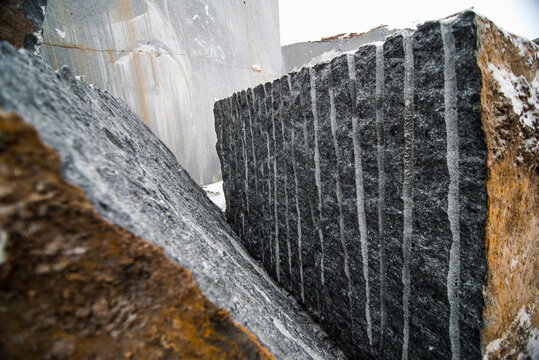Granite Quarries in South Africa Marvels: Discovering the Quarry Landscape
Granite Quarries in South Africa Marvels: Discovering the Quarry Landscape
Blog Article
Discovering the Rich History and Sustainable Practices of Granite Quarrying
As we stand on the precipice of revealing the complex tapestry of granite quarrying, a journey through time discloses not just the physical act of extracting rock however also the social and historical importance woven right into the really material of this practice. From the old origins that laid the foundation for modern-day quarrying strategies to the lasting practices that are shaping the future of this sector, each sculpt mark on granite surfaces narrates waiting to be discovered (granite quarries in south africa). The heritage of granite quarrying stretches much beyond mere removal; it is a testament to human resourcefulness, resilience, and the long-lasting allure of this stunning stone
Ancient Beginnings of Granite Quarrying
Dating back to old human beings, the method of quarrying granite has actually been an essential component of human background and building advancement. The earliest proof of granite quarrying go back to old Egypt, where massive pyramids and elaborate sculptures were crafted from this long lasting stone. The Egyptians made use of primitive tools to remove granite blocks from quarries, showcasing the importance of this product in their monumental buildings.
Moving on in background, the Greeks additionally made significant contributions to the quarrying of granite. The Greeks utilized granite in numerous building marvels, such as temples and statues, demonstrating their skill in shaping and sculpting this durable rock. The Romans even more fine-tuned the strategies of quarrying granite, using advanced tools like blades and hammers to essence and form granite for their legendary structures.
Through the centuries, the method of quarrying granite has advanced, with modern-day innovations boosting efficiency while maintaining the ageless allure of this all-natural stone - granite quarries in south africa. From ancient worlds to contemporary contractors, the tradition of granite quarrying remains to shape our world
Evolution of Quarrying Techniques
The development of quarrying methods has actually been marked by a continual development in the direction of higher effectiveness and accuracy in removing granite. From the primary methods used by our ancestors to the advanced modern technologies utilized in modern quarrying procedures, the industry has gone through substantial developments. Early quarrying methods involved manual labor with basic devices such as blades, hammers, and wedges to extract granite blocks from the earth. As people advanced, strategies like fire-setting and primitive dynamites were presented to help with the extraction process.
In even more current times, the introduction of equipment changed the quarrying market, making it possible for quicker extraction prices and boosted efficiency. Technologies such as diamond cable saws, high-pressure water jets, and pneumatic drills have actually ended up being conventional in modern-day quarries, enabling specific cutting and minimized waste. Advancements in computer-controlled tools and 3D modeling have maximized quarrying operations, leading to marginal environmental effect and improved sustainability methods. As the need for granite remains to increase, the advancement of quarrying techniques stays integral to meeting sector needs effectively and sustainably.
Social Significance of Granite
Granite holds an extensive like it cultural significance throughout numerous worlds as a result of its long-lasting presence in architectural masterpieces and admired monoliths. From the magnificent pyramids of Egypt to the elaborate carvings of the Angkor Wat temple in Cambodia, granite has been a product of option for sharing majesty and long life in social heritage. In old Rome, granite columns embellished holy places and public structures, representing stamina and durability. The social relevance of granite prolongs beyond its physical characteristics; it embodies resilience, stability, and eternity, making it an icon of sustaining heritages and customs.

Lasting Practices in Quarrying
In the middle of the rich history of granite quarrying and its cultural importance lies a growing emphasis on sustainable techniques within the industry. As ecological recognition and concerns about source depletion have heightened worldwide, the quarrying sector has increasingly embraced lasting methods to minimize its effect on the setting and bordering areas.

In addition, reclamation and recovery of quarry websites post-extraction are essential to sustainable techniques. By why not look here restoring quarried areas to a natural or valuable state, such as producing wildlife habitats or leisure rooms, quarriers can balance out the ecological footprint of their operations and add positively to the local environment.
Heritage of Granite Quarrying
With a historical background soaked in workmanship and commercial progress, what sustaining influence has granite quarrying left on the landscape of contemporary society? The tradition of granite quarrying transcends simple extraction practices; it has shaped building wonders, city landscapes, and social heritage worldwide. The long lasting nature of granite has actually made it a favored option for monuments, buildings, and infrastructure, standing as a testimony to the ability and creativity of quarry workers across generations.
Moreover, the economic impact of granite quarrying can not be web overlooked. The sector proceeds to supply employment possibility and drive local economies in regions where granite removal is widespread. It has also stimulated technical improvements in quarrying strategies and tools, bring about more efficient and lasting methods.
In terms of sustainability, the tradition of granite quarrying includes initiatives to reduce ecological influences through improvement jobs and accountable resource administration. By stabilizing economic passions with environmental stewardship, the sector aims to guarantee that future generations can continue to take advantage of this enduring natural deposit.
Final Thought

Report this page